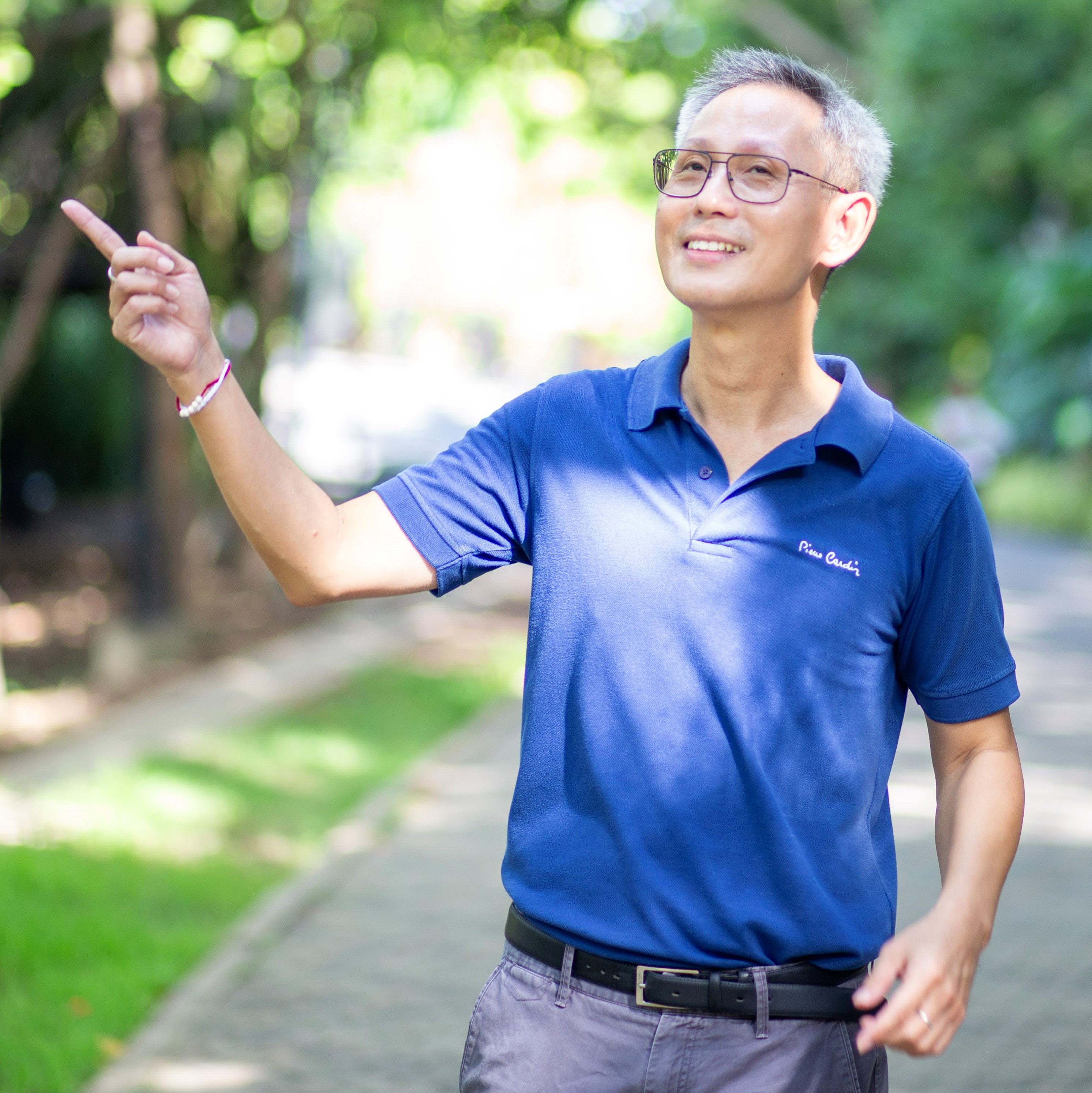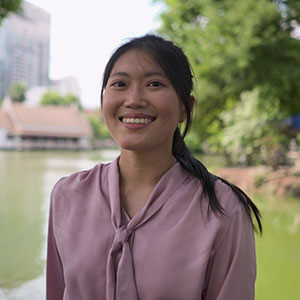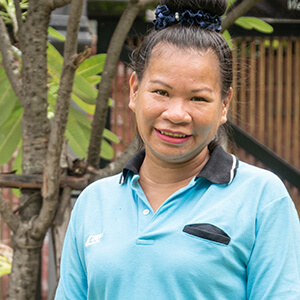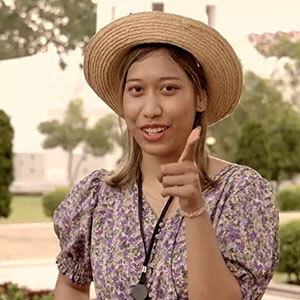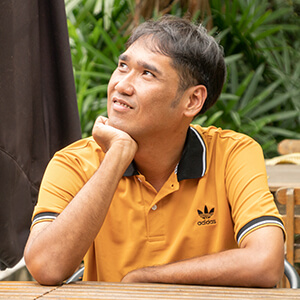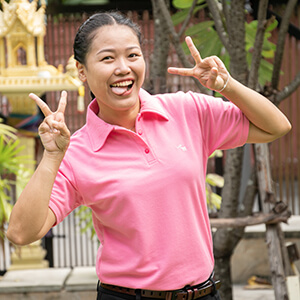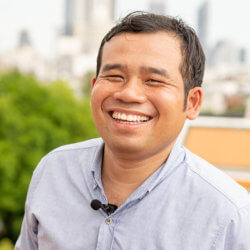Price: Free
This golden shrine in central Bangkok has an interesting history. It’s worth visiting just to reflect on how it came to be, the incidents it has suffered, and how popular it has become.
Erawan Shrine in Bangkok is a Brahman shrine, but attracts more visitors than many of the nearby temples. The Thai government built the luxury Erawan Hotel here in the 1950s. The early stages of construction had so many problems that the superstitious labourers refused to continue unless the land spirits were appeased. One of the problems was apparently caused by laying the foundations on the wrong date. The erection of a shrine (also known locally as a spirit house) to honour the four-faced Brahma God, Than Tao Mahaprom, was considered to be a solution to the problem. A magnificent gilded image of the Brahma God was specially cast, and the hotel operated smoothly for the next thirty years. These days the old Erawan Hotel has been replaced by the privately-owned Grand Hyatt Erawan Bangkok and the Erawan Shrine kept the name of the hotel it was originally built for.
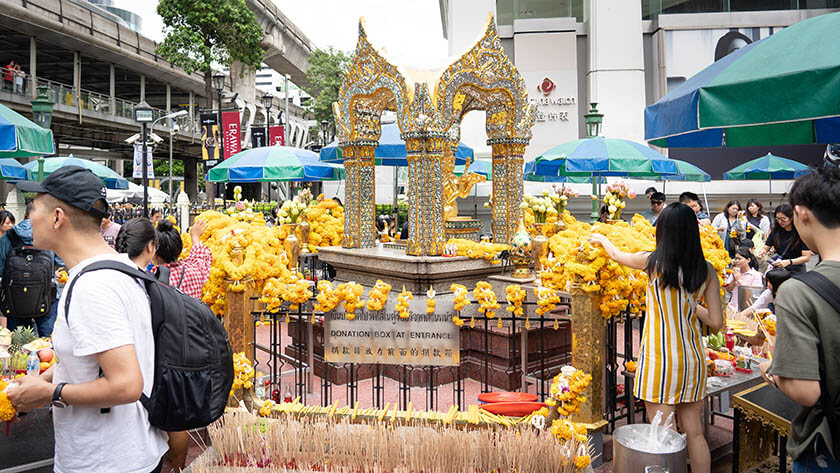
Erawan shrine was previously known as Thao Maha Phrom Shrine, and houses a beautiful golden statue of Phra Phrom. Phra Phrom is also known as the four-faced Thai representation of the Hindu god of creation, Brahma. The four faces represent the four virtues of Phra Phrom, kindness, mercy, sympathy and impartiality. When you visit the Erawan Shrine you’ll witness unending streams of devotees crowding the shrine, praying for everything from a new child, help at work or at home, lottery tickets, or just for blessings. It’s customary to light joss sticks and candles, which you can buy from street vendors or in the shrine, as offerings to Phra Phrom. Other offerings include garlands of flowers, fruits, wooden elephants or even hiring the resident Thai dance troupe to perform for Phra Phrom. Lots of the gifts are given by returning worshippers thankful that their prayer wish has been granted.
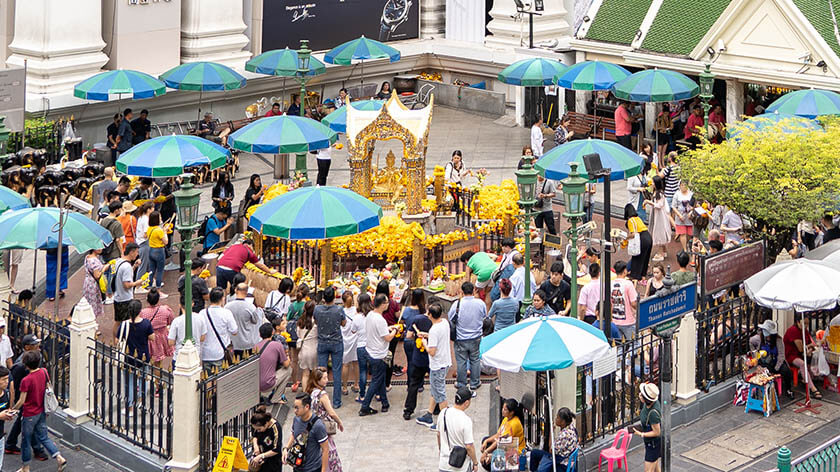
The Ratchaprasong intersection had once been used to put criminals on public display and, back in 2015, the Erawan Shrine was the scene of an horrific bombing attack. But in true Thai style, locals have managed to overcome the apparent bad karma of these events. The shrine is an example of the resilience of the Thai people in making the most of their amazing culture amid the busy day to day life in the city of Bangkok.
Things to remember on your visit to the Erawan Shrine
- You won’t need to allow much time to visit. There are plenty of other places you’ll want to spend more time at, and this shrine isn’t one that invites quiet contemplation.
- Avoid the busy morning times if you can.
- Be respectful, don’t get in the way of locals who don’t have much time to pray.
- Hopefully, you will get to see a Thai dance troupe perform or a Chinese lion dance.
- The dance troupes are not there for the tourists, but rather for worshippers to hire to perform as part of their worship.
- Make sure you tour with a guide from Your Thai Guide as many tourists can fall foul of locals just because they don’t understand the local customs. Like walking clockwise around the statue and if you are offered a garland, do not wear it, place it on the shrine instead.
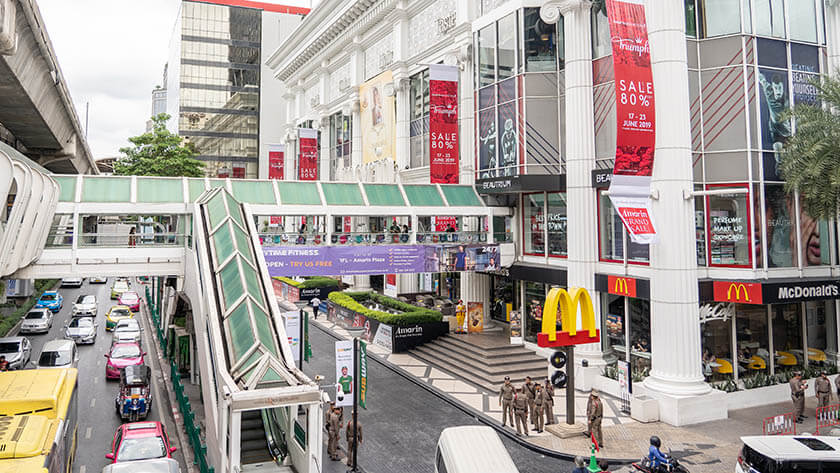
The shrine is ‘open’ from 6am to midnight seven days a week and is in front of the Grand Hyatt Erawan Hotel, on the corner of Ploenchit and Ratchadamri Road in Bangkok.
The Erawan Shrine is just outside of Bangkok’s old city but is very centrally located in the modern and growing Pathum Wan district. It’s not far from many other attractions and temples such as:

